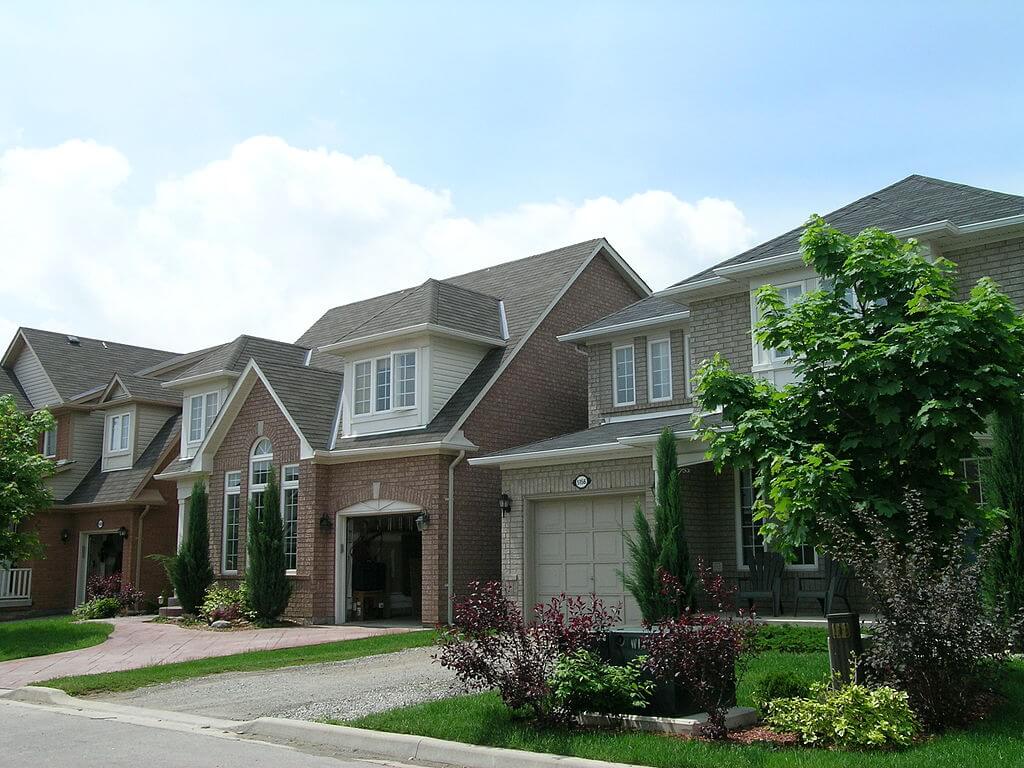To help answer that question, let’s look at the level of income you or your household are going to need to purchase a home in Toronto and the Greater Toronto Area (GTA), based on the benchmark home prices reported by the Toronto Regional Real Estate Board (TRREB) in August 2022.
Income needed by property type
First, let’s look at the income required for home buyers across the entire GTA (both the 416 and suburban 905) by property type.
| Across the GTA | Benchmark home price | Household income needed | Monthly mortgage payment |
|---|---|---|---|
| Single-family detached | $1,414,000 | $280,000 | $6,741 |
| Single-family attached | $1,079,000 | $214,000 | $5,144 |
| Townhouse | $838,300 | $167,000 | $3,996 |
| Apartment/condo | $739,000 | $148,000 | $3,523 |
There’s no debating that you will require a significant household income to afford any home in the GTA. In 2020, Canadians earned $51,300 in income on average, and the median net income of Canadian families and individuals living alone was $66,800—you would need more than four times that income to qualify for a mortgage on a detached home in the GTA.
Income needed by city in the GTA
In addition to providing a broad overview of the region’s real estate market, we dug up the incomes required for the average property in each city in the GTA (the benchmark home price includes detached and attached houses, townhouses, and apartments/condos).
| City | Benchmark home price | Household income needed | Monthly mortgage payment |
|---|---|---|---|
| Ajax | $1,042,900 | $207,000 | $4,972 |
| Aurora | $1,346,700 | $267,000 | $6,420 |
| Brampton | $1,051,900 | $209,000 | $5,015 |
| Brock | $727,400 | $146,000 | $3,468 |
| Burlington | $994,400 | $198,000 | $4,741 |
| Caledon | $1,400,000 | $277,000 | $6,674 |
| Clarington | $877,100 | $175,000 | $4,181 |
| East Gwillimbury | $1,273,800 | $253,000 | $6,073 |
| Georgina | $801,600 | $160,000 | $3,822 |
| Halton Hills | $1,120,800 | $223,000 | $5,343 |
| King | $1,837,300 | $363,000 | $8,759 |
| Markham | $1,341,300 | $266,000 | $6,394 |
| Milton | $1,029,700 | $205,000 | $4,909 |
| Mississauga | $1,093,800 | $217,000 | $5,215 |
| Newmarket | $1,198,100 | $238,000 | $5,712 |
| Oakville | $1,347,900 | $267,000 | $6,426 |
| Oshawa | $840,800 | $168,000 | $4,008 |
| Pickering | $1,058,200 | $210,000 | $5,045 |
| Richmond Hill | $1,435,700 | $284,000 | $6,844 |
| Scugog | $979,900 | $195,000 | $4,672 |
| Stouffville | $1,394,200 | $276,000 | $6,647 |
| Toronto | $1,118,300 | $222,000 | $5,331 |
| Uxbridge | $1,296,600 | $257,000 | $6,181 |
| Vaughan | $1,388,000 | $275,000 | $6,617 |
| Whitby | $1,060,700 | $211,000 | $5,057 |
Mortgage rates have risen sharply since March 2022, when the Bank of Canada started increasing its benchmark interest rate. In turn, Canadian real estate prices have been on a steady decline since the rate hikes began. However, this hasn’t resulted in any substantial improvement to mortgage affordability.
The drop in home prices has been offset by higher interest rates, which reduce the amount new home buyers can borrow for their mortgage. For there to be a significant drop in the income needed to buy a home in Toronto or the GTA, home prices will have to fall even further.
How to calculate how much income you need
If you’re borrowing funds to buy a home, a mortgage professional will put your finances to the test.
First, they will look at your gross debt service (GDS) ratio. Your GDS ratio is calculated by adding up all your monthly housing expenses (mortgage payments, utilities and taxes), dividing that number by your household income, and multiplying by 100. If your GDS works out to be 39% or less, you should be able to afford the home, according to the Canada Housing and Mortgage Corporation. That said, some lenders may limit you to a lower GDS ratio. The Financial Consumer Agency of Canada uses a GDS of 32% as a guideline.


